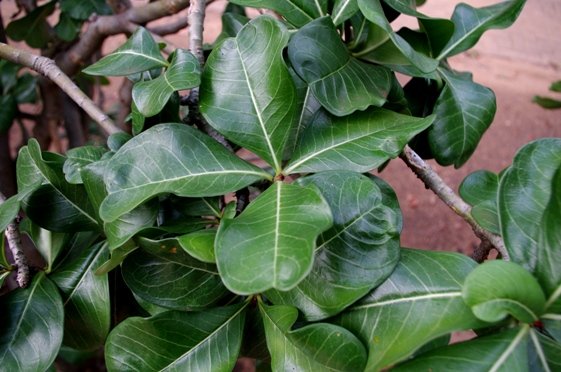Adenium multiflorum leaves

Author: Ivan Lätti
Photographer: Jack Lätti
The leaves of Adenium multiflorum seen here in January in the Kruger National Park are dark green and glossy above, paler and dull below. Because the plant is deciduous, fresh leaves emerge annually as new growth after winter with spring rain. No leaves, beside a few, yellowing late-stayers, are usually present to interfere with the plant’s big event, the spectacular winter flowering. This causes the stems to become bare lower down, as new leaves sprout annually in brief clusters at the branch tips only.
The simple leaves are alternate or spirally arranged. They sometimes have petioles, which may become up to 5 mm long but sometimes obscured, replaced by leaf-bases extending onto the stems (decurrent). Multiple axillary glands are present. There may sometimes be stipules.
The leaf-shape is obovate to oblong with entire, whitish margins, notched or rounded tip and tapering base. Apart from glossy green, the blades may be bluish green above, paler green below, and yellowing with age. The blade texture is normally fleshy, the surfaces smooth and hairless. The leaf midribs are conspicuously white in the photo, often tinged pink and prominent on both surfaces. Six to eleven pairs of lateral veins are parallel, ascending slightly and looping forwards, mostly without reaching the margins.
The leaf dimensions are from 35 mm to 125 mm long and about 28 mm wide (Coates Palgrave, 2002; Onderstall, 1984; Codd, 1951; iNaturalist; https://pza.sanbi.org).

